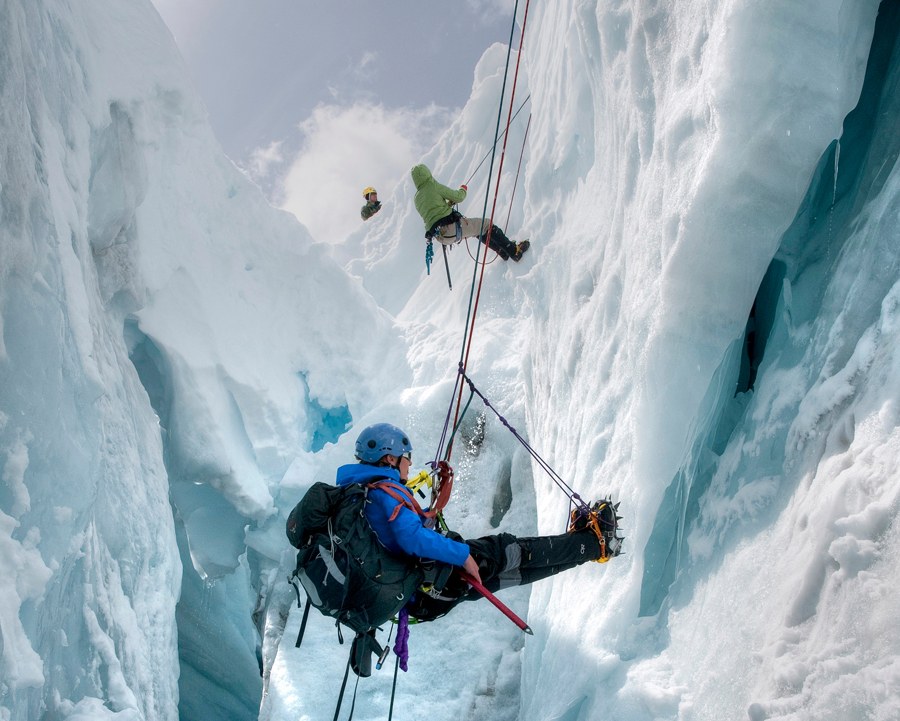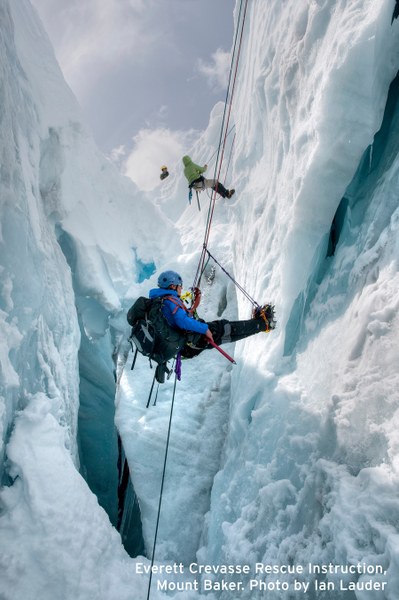
By Tony Tsuboi, Mountaineers Safety Committee, Climb Leader, and AIARE Level 1 Instructor
As much as we plan and prepare for a trip, sometimes things go sideways. It just takes a twisted ankle in the backcountry to throw a monkey wrench into our travel plans. Our own safety report records show that slips, trips and falls dominate all categories of severity of incidents reported each year. What can we expect when calling for help?
First, it’s going to take a while. As alpine enthusiasts, we purposely escape civilization, place ourselves in harm’s way, and wander out of cell range. So hunker down, stay put, stay warm, and protect the patient (and yourself) in the meantime.
Then there’s the call itself. This could be the team’s emergency contact reporting the team overdue, or it may be you running down the trail to call for help. Do you have a concise summary of the relevant information? This would be one reason to have a detailed trip plan and to carry it with you when dialing 911. It should contain the full names and contacts of the party, the planned route and approach detail, relevant maps, and specify the county of jurisdiction.
Be prepared to clarify that this is a mountain rescue incident, and you are requesting routing to a specific county’s sheriff department or a particular National Park Service’s SAR unit. Know this in advance and include this in the trip plan you carry. Knowing whether or not the team is equipped with FRS radios tuned to a specific channel, a stove, shovel and overnight gear would be helpful information. Specifying tent colors may aid identification from the air. Knowing vehicle descriptions and where cars are parked will help law enforcement confirm you are still out there. A detailed trip plan is a useful summary of this detail and a valuable part of an emergency response plan. As a best practice, this should be carried with the party and left with a responsible person on the ground who is tasked to dial 911 if you are overdue and have not checked in by a designated time.
Once you make the call and are routed to the appropriate agency of jurisdiction, several decisions behind the scene will be made based on the time of day, location, weather and the circumstances of the incident. The quality of information you provide can have a dramatic effect on who would be mobilized, whether additional help is requested, and whether a helicopter would be considered. Even if a helicopter is dispatched, it could be several hours from your initial call before a helicopter is in the air. A ground response that requires dozens of responders to assist may not have you packaged up and ready to move until the following morning when support arrives.
If the situation warrants a helicopter, that does not mean there is one is on the way. A lot of factors go into the decision to deploy a helicopter. One may simply not be available, or weather conditions may not permit. If a helicopter is dispatched, your particular circumstances outweighed the risks weighed. Be aware, helicopters are dangerous, they kick up a lot of turbulence, and the flight crew is putting their lives at risk when they fly. Be deliberate and signal to them in distress as they fly over. Follow any instructions they give. You may be trying to be helpful, but to them, you are a wild card whose intentions they do not know. Be attentive and let the rescue technician direct you. Never grab at the aircraft or anything being lowered unless directed to. Often the air team will lower a rescue technician well away from where you are to mitigate any chance of you doing something that could put the helicopter or the team at risk. We are often on steep and unstable terrain. Take no action that puts you or your party at greater risk. Stay put unless directed otherwise.
When you talk to the dispatcher, be prepared to describe the nature of the incident, the condition of the injured party, and what care is in place. Location detail is critical. UTM coordinates are extremely useful, but naming specific trails, peaks and any identifying terrain will help to locate you efficiently. Does the party have whistles, flashing beacons common in modern head lamps or any communication devices, like a two-way PLB or FRS radios? Often the last half mile is the most challenging when the party is traveling cross country or located off trail. With FRS radios, specify the channels and a planned alternate channel in your trip plan. Is your team equipped to protect the patient from the elements and to treat for shock? While help is on the way, it will likely be several hours before it arrives. Lastly, any acute medical conditions should be relayed to the 911 operator when making this call. Have a copy of the trip plan and document any incident detail before you run to the cars. You will need this when you call.
Lastly, do not hesitate to call for help if you need it. There are no fees charged for mountain rescue and mission deployment. Everyone I spoke with in preparation for this article mentioned that they would prefer to respond to a false alarm than fail to deploy when help is really needed.

I want to thank the many members of Snohomish County Volunteer Search and Rescue that I’ve met over the years and partnered with in teaching climbing and avalanche education courses. Special thanks to John Morton, Jon Schwegler and Ernie Zeller for sharing their insights on what to expect in a mountain rescue.
Add a comment
Log in to add comments.It is good advice, though I don't know if very many people even know what UTM is. Might want to have more mention of what goes in to a land transport of a patient, as far as the time to get the teams to the trailhead, getting them up the trail with equipment, loading the liter if needed, and the fact that the ride down is not terribly comfortable, and is really slow. Helicopters are usually only used in life threatening situations, or if the subject is way out in the middle of no where, which I think in 20 years of SAR, I have only seen the way out 3 or 4 times. We have traveled many a mile to get someone and bring them back.
 Tony Tsuboi
Tony Tsuboi
